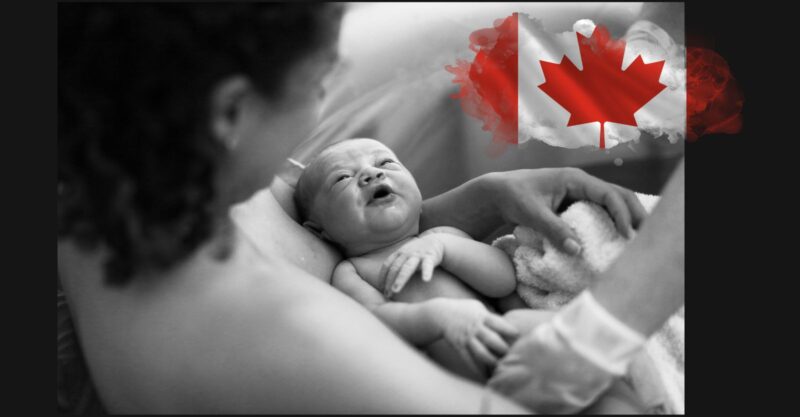Home: The Natural Place for Birth
Why midwife-supported home birth offers safety, comfort and empowerment for families
From the article “Birth, Every Home Should Have One,” by Jennifer Margulis, PhD, and Suzanne Arms
Originally published by Kindred Magazine
Birth most often begins in love. Two people, joined in intimacy, conceive a child in an act that is natural, joyful and private. Yet when the time comes to bring that child into the world, the majority of women in Canada and across industrialized nations are told the safest place to give birth is not in the home, but in a hospital.
We disagree.
Hospitals are for the sick
Hospitals play a vital role in emergency medicine and surgery. But childbirth is not an illness. Despite this, birth has been medicalized and moved almost entirely into institutions. In the United States, over 98 per cent of births happen in hospitals. In Canada, the rate is similar.
Inside hospitals, women are subject to interventions that are often unnecessary and sometimes harmful: continuous fetal monitoring, restrictions on eating and drinking, being confined to bed, and the all-too-common directive to labour flat on their backs. Such practices can make contractions longer, more painful and less effective.
Perhaps the most damaging intervention is routine mother–baby separation in the hours following delivery, which research has shown interferes with bonding and breastfeeding.
The science on safety
A growing body of international research shows that planned home birth with a skilled midwife is as safe—or safer—than hospital birth.
A landmark Canadian study published in CMAJ in 2009 compared outcomes for babies born at home with midwives, babies born in hospital with midwives, and babies born in hospital with physicians. The results were striking: babies born at home with midwives had the best outcomes. The study concluded that planned home birth “was associated with very low and comparable rates of perinatal death and reduced rates of obstetric interventions and other adverse perinatal outcomes.”
Other countries with some of the world’s best birth outcomes—Japan, the Netherlands and Nordic nations—see the majority of births attended by midwives. In these systems, women are treated with patience and respect, given freedom to move, to eat and drink, and to birth in positions that work with, not against, the body. The result? Lower rates of caesarean section, fewer complications, and healthier mothers and babies.
Birth in Canada
In Canada, midwifery is regulated in most provinces and territories, and midwives are trained, licensed professionals. Yet fewer than 5 per cent of births currently happen at home. Many Canadian women who might prefer a home birth are told it is unsafe. The evidence tells a different story.
Home birth has been proven to be cost-effective, safe and deeply satisfying for families. It reduces unnecessary medical intervention and fosters immediate bonding and breastfeeding. When complications arise, transfer to hospital remains an option—not a failure, but a change of plans.
A blessing for families and communities
Birth is not simply a medical event. It is a profoundly human one. A woman birthing at home is surrounded by familiar comforts and supported by attendants she knows and trusts. Her baby is welcomed into the world gently, with skin-to-skin contact and without the shock of separation.
Canadian author Lucy Maud Montgomery once wrote that a house is not truly a home until it has been consecrated by a birth, a wedding, and a death. Birth at home is not only a blessing for the family—it is a blessing for humanity.
➡️ Read the full article Birth, Every Home Should Have One
Additional References
Government of Canada. (2018). Family-centred maternity and newborn care: National guidelines. Public Health Agency of Canada.
Hutton, E. K., Reitsma, A. H., & Kaufman, K. (2009). Outcomes associated with planned home and planned hospital births in low-risk women attended by midwives in Ontario, Canada, 2003–2006. Canadian Medical Association Journal, 181(6–7), 377–383.
Janssen, P. A., Saxell, L., Page, L. A., Klein, M. C., Liston, R. M., & Lee, S. K. (2009). Outcomes of planned home birth with registered midwives versus planned hospital birth with midwife or physician. Canadian Medical Association Journal, 181(6–7), 377–383.
Kornelsen, J., & Grzybowski, S. (2014). The Canadian birth place study: Examining maternity care provider attitudes and interprofessional conflict around planned home birth. BMC Pregnancy and Childbirth, 14(1), 353.
McRae, D. N., Muhajarine, N., Stoll, K., Mayhew, M., & Janssen, P. A. (2017). Characteristics of patients receiving midwife-led prenatal care in Canada: Results from the Maternity Experiences Survey. BMC Pregnancy and Childbirth, 17, 124.
******************************************************************************************************

